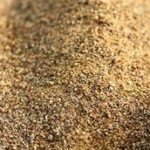Seed, Oil and Meal
 Seed
Seed
Canola seed comes from pods of canola plants and are crushed to produce oil and meal. Each seed contains about 45 percent oil. This large percentage of oil comes in a small package; canola seeds are similar in size to poppy seeds, though brownish-black in color.
 Oil
Oil
Canola oil is the third most consumed oil in the world and number two by volume in the United States. But it is number one in health everywhere due to its idyllic fat profile. In fact, U.S. canola oil consumption has more than quadrupled from 2003 to 2019 from 4.5 to 17.2 pounds per capita. It was deemed Generally Recognized as Safe by the U.S. Food and Drug Administration in 1985 and for use as an ingredient in infant formula in 2013.
 Meal
Meal
Canola meal is one of the most widely used protein sources in feed for livestock, poultry and fish. It has an excellent amino acid profile and it is rich in vitamins and essential minerals. Studies show that including canola meal in dairy cow rations can increase milk production by as much as one liter per cow per day. Canola meal also serves as a bio-herbicide and high-quality fertilizer suitable for organic farming and as a source of plant protein in human foods.
The U.S. Department of Agriculture’s Economic Research Service publishes historical data on canola seed, meal and oil supply and disappearance. For daily canola cash prices, visit NorthernCanola.com.